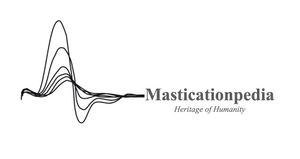As can be seen from the 'Book Index', the scientific editorial work is what that Gianni Frisardi, who gave the idea of founding Masticationpedia, would have liked to find 40 years ago when he began to take an interest in 'Masticatory Rehabilitation'. At the same time, the project is also a pharaonic adventure given the vastness of the topics covered.
This requires the participation of the whole 'Scientific Community' to hope to reach the paradigmatic conclusion of normalizing the 'Masticatory function' to the Central Nervous System responses rather than to the gnathological axioms.
| NORMAL SCIENCE | |||||||||||
|---|---|---|---|---|---|---|---|---|---|---|---|
| Introduction | Bruxism | Orofacial Pain | |||||||||
| Logic of medical language
The logic of Classical language The logic of Probabilistic language Logic of medical language: Introduction to quantum-like probability in the masticatory system Exploring electroencephalography with a model inspired by quantum mechanics. Quantum-like modeling in biology with open quantum systems and instruments Conclusions on the status quo in the logic of medical language regarding the masticatory system |
2° Clinical case: Pineal Cavernoma
The neuro-pathophysiology of temporomandibular disorders-related pain: a systematic review of structural and functional MRI studies The neurophysiological basis of bruxism* Is dopaminergic medication dose associated with self-reported bruxism in Parkinson’s disease? A cross-sectional, questionnaire-based study* Interdisciplinary recognizing and managing of drug‐induced tardive oromandibular dystonia: two case reports Encrypted code: Hyperexcitability of the trigeminal system2° Clinical case: Pineal Cavernoma |
4° Clinical case: Temporomandibular disorders
Temporomandibular Syndrome Clinical, psychological, and sensory characteristics associated with headache attributed to temporomandibular disorder in people with chronic myogenous temporomandibular disorder and primary headaches An artificially intelligent (or algorithm-enhanced) electronic medical record in orofacial pain 5° Clinical case: Spontaneous Electromyographic Activity Abnormal Spontaneous Electromyographic Activity* Demystifying the spontaneous phenomena of motor hyperexcitability Encrypted code: The trigeminal symmetry | |||||||||
| Hemimasticatory spasm | Occlusion and Posture | Are we sure to know everything? | |||||||||
| 1° Clinical case: Emimasticatory spasm
Intermittent facial spasms as the presenting sign of a recurrent pleomorphic adenoma |
3° Clinical case: Meningioma
Association between constitution, axiography, analysis of dental casts, and postural control in women aged between 41 and 50 years Effect of dental malocclusion on cerebellar neuron activation via the dorsomedial part of the principal sensory trigeminal nucleus Encrypted code: Motor Evoked Myogenic potentials |
6° Clinical case: Brainstem neoplasm in Orofacial pain
7° Clinical case: Trigeminal neurodegenerative pathology Kuhnian revolutions in neuroscience: the role of tool development* Diagnostic Delay and Its Predictors in Cluster Headache*
Conclusion about Normal Science chapter
| |||||||||
| CRISIS OF PARADIGM | |||||||||||
|---|---|---|---|---|---|---|---|---|---|---|---|
| Research Diagnostic Criteria (RDC) | Mandibular kinematic replicators | Electromyography (EMG) | |||||||||
|
Jaw opening width Speed of mandibular movement Complexity of chewing kinematics |
Advantages and limits of Kinematic replicators
Pantography Axiography Electrognatography |
EMG Interferential pattern
EMG at rest position Quantitative analysis of the EMG Fourier transform Wavelett | |||||||||
| Temporomandibular Joint | Transcutaneous Electric Nerve Stimulation | Conclusions to the Paradigm crisis chapter | |||||||||
| Computerized Tomography of the TMJ
Magnetic resonance imaging of the TMJ |
Free way space before stimulation
Free way space after stimulation Closing trajectory from TENS |
Incompleteness in the 'Research Diagnostic Criteria'
Need for a new paradigm | |||||||||
| EXTRAORDINARY SCIENCE | |||||||||||
|---|---|---|---|---|---|---|---|---|---|---|---|
| Masticatory Neurophysiology | Electrophysiological overall view of the Masticatory System | Trigeminal System Connectivity | |||||||||
|
Mesencephalic mechanisms Trigeminal Motor nucleus |
Overall view of the Masticatory System
Trigeminal electrophysiological segmentation Electric Motors Evoked Potentials Magnetic Motors Evoked Potentials Jaw jerk reflex M-wave Masseteric Mechanical Silent Period Masseteric Electric Silent Period Masseteric Laser Silent Period Recovery Cycle of Masseteric Inhibitory reflex |
Definition of the Fundamental Unit
Structural and functional connectivity Separation Understanding of "Emergent Behavior" Connectivity measurement Maximal Neuronal Energy Evoked Bilateral Trigeminal neuromotor organic symmetry Functional motor symmetry Normalization Muscle activation during maximum voluntary contraction and m-wave related in healthy but not in injured conditions: Implications when normalizing electromyography Organic vs Functional Symmetry Neuro Gnathological Functions paradigm Psi Index
| |||||||||
| Sensory network | |||||||||||
| Proprioceptive mechanisms
Neuromuscular spindles Sensory mechanisms from the depressor muscles Golgi Tendon Organs Role of impulses from the neck muscles Periodontal and Oral Sensory Factors Pharyngeal sensory factors Reflex of mandibular closure Sensory factors of the TMJ |
|||||||||||
